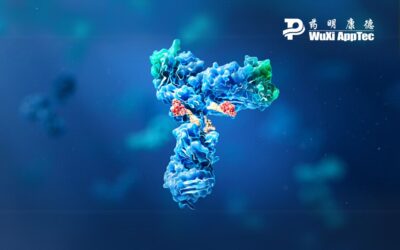Safety assessment studies are critical to the progression of your drug candidate through the preclinical and clinical Safety assessment studies are critical to the progression of your drug candidate through the preclinical and clinical development process. In this blog, we cover six types of studies that you might need to include.
Before you can conduct First-In-Human (FIH) studies, you need to file an Investigational New Drug (IND) application. IND submissions require a robust package of absorption, distribution, metabolism, and excretion (ADME), drug metabolism and pharmacokinetics (DMPK), and safety data to demonstrate that the potential benefits of the drug outweigh the risks. This data is collected through preclinical testing.
READ MORE: What Toxicity Data Is Needed Before First-In-Human Trials?
Following IND approval and subsequent clinical testing, drug manufacturers can compile a New Drug Application (NDA) to seek approval for marketing the new pharmaceutical product in the United States.
The process for both steps – IND and NDA submission – is substantial, especially when it comes to running toxicology studies. From selecting the right tests to collecting the best data, this process requires a significant collaboration between you and your drug safety assessment testing partner.
Here are 6 possible types of toxicology testing you might need to conduct for your IND or NDA.
#1. General Toxicology Testing
General toxicology tests assess the potential for adverse effects after a single dose or repeated exposure. There are three types of tests that fall under general toxicology:
- Dose Range Finding testing helps you identify the proper dosage to inform later stage studies.
- Single Dose Acute toxicity testing helps you identify potential adverse effects of new drug candidates through the administration of a single, maximum tolerated dose (MTD). This study describes the relationship between an ideal dose amount and toxicity, and its data is later used in comparison with that of repeat dosage tests.
- Repeat Dose toxicity testing helps you evaluate the effects of repeated administration over a defined period. Chronic toxicity studies determine proper dosing amounts for GLP studies and identify potential target organs affected by the candidate.
Conducting general toxicology tests early in the development process allows researchers to identify potential safety concerns and make informed decisions regarding the drug’s future development.
#2. Carcinogenicity Testing
Carcinogenicity testing evaluates a drug’s potential to induce cancer. Carcinogenicity testing entails administering the candidate over an extended period, closely monitoring subjects for the development of tumors or other cancer-related effects.
The results of these studies evaluate the potential risks associated with the drug, informing decisions on further development and eventual human usage. There are two common test applications for carcinogenicity: 104-week and 26-week studies.
- A 104-week carcinogenicity study exposes rats or mice to a test substance for a period of two years. This long-term study assesses the potential of the substance to induce cancer over an extended duration, which accounts for the detection of tumors over a longer latency period.
- A 26-week carcinogenicity study in transgenic species is a 6-month toxicology study using genetically modified mice. RasH2 specie carry an activated human H-ras oncogene, making them more susceptible to developing tumors. The RasH2 model is appealing to labs as it requires fewer resources, can be done faster, and reduces costs.
Since carcinogenicity studies are time-consuming and resource intensive, a personal carcinogenicity testing program may be required. Partnering with the right safety assessment services provider ensures your upcoming project is equipped with carcinogenicity study elements, including models, administration routes, dose levels, housing and feeding, endpoints, and pathology.
#3. Safety Pharmacology Testing
Safety pharmacology testing evaluates the adverse effects of a drug on various physiological functions. Testing applications include:
Functional Observational Battery (FOB) studies
- FOB studies are a type of safety pharmacology testing that assess the effects of a test substance on the nervous system and behavior of species. In these studies, species are evaluated for physiological and behavioral changes, such as locomotor activity, coordination, reflexes, and sensory responses. The goal of FOB studies is to identify potential neurobehavioral effects or adverse reactions of a drug that may impact its safety profile.
CNS System Evaluation
- CNS system evaluation is the assessment of potentially adverse effects of a drug candidate on the central nervous system; the brain, spinal cord, and associated neural pathways. CNS safety evaluation assesses motor activity, cognitive function, sedation, and seizure susceptibility.
Cardiovascular Telemetry Studies
- Cardiovascular telemetry studies monitor heart rate, blood pressure, and electrocardiogram (ECG) metrics to assess the effects of a candidate on the cardiovascular system. Cardiovascular telemetry studies identify potential adverse cardiovascular symptoms, such as arrhythmias, changes in blood pressure, or alterations in cardiac function.
Jacketed External Telemetry
- Jacketed external telemetry (JET) monitors the physiological parameters in species during preclinical studies. In this approach, species are implanted with telemetry transmitters that measure physiological factors such as heart rate, blood pressure, and body temperature. These transmitters are encased in protective jackets or harnesses that are attached externally to the species’ body. This setup allows for real-time monitoring of physiological metrics without restraint, minimizing interference with normal species behavior.
Respiratory System Studies
- Respiratory system studies assess the effects of drugs on the respiratory system of species. These studies aim to evaluate how a drug may affect respiratory function, including breathing rate, lung function, airway responsiveness, and gas exchange.
hERG Assay
- The hERG assay, or human ether-a-go-go-related gene assay, evaluates a drug’s effects on the electrical abnormalities in hERG channel function and heart, a known risk factor for arrhythmias. By measuring the drug’s ability to block the hERG channel, the hERG assay provides valuable information on the cardiac safety profile, aiding in the early identification of potential cardiovascular risks during drug development.
Gastrointestinal Motility Studies
- Gastrointestinal motility studies assess the effects of a drug on the movement and function of the gastrointestinal tract. These studies evaluate the contraction and relaxation of muscles in the stomach and intestines as well as the transit time of food through the digestive system.
Renal Function
- Renal function studies evaluate how a drug affects the kidneys’ ability to filter and excrete waste products from the body. This assessment involves studying parameters such as glomerular filtration rate (GFR), urine output, and biomarker levels in the urine or blood.
Safety pharmacology testing is best utilized in the evaluation of drug effects on specific physiological functions. Due to the wide range of safety pharmacology tests, a specialized study towards a targeted system can be conducted.
#4. DART Testing
DART testing, or Developmental and Reproductive Toxicology testing, assesses the potential adverse effects of a drug on the developing fetus and reproductive system. DART testing comprises three distinct segments aimed at assessing different stages in the developmental process of a fetus:
- Segment 1 assesses maternal toxicity, embryonic and fetal development during early gestational stages. It involves administering the drug to pregnant species during organogenesis.
- Segment 2 testing takes place throughout the entire period of organogenesis and fetal development. It involves administering the test compound to pregnant species throughout gestation to assess its potential effects on fetal growth, development, and survival. This segment provides additional information on potential developmental toxicity.
- Segment 3 focuses on postnatal development, continuing to assess the effects of a drug on offspring after birth. It involves administering the compound to pregnant species, continuing exposure through lactation to evaluate its impact on neonatal growth, survival, and development.
DART testing is conducted as an extension of safety pharmacology testing, as it can precisely identify a drug’s adverse effects on a model during specific points in the reproductive process.
#5. In Vitro Toxicology Testing
In vitro toxicology testing assesses the potential toxicity of a drug utilizing cell structures or tissues outside of a living organism. There are various studies used during in vitro toxicology testing, including:
Bacterial Reverse Mutation Assay (Ames)
- The Ames test assesses the mutagenic potential of chemicals by exposing bacteria to the drug with or without metabolic activation enzymes. Additional in vitro and in vivo assays are often needed to fully evaluate a substance’s carcinogenic potential, as is the case for all other in vitro toxicology testing methods listed.
In Vitro Chromosomal Aberration Assay
- In vitro chromosomal aberration assay is a laboratory test that assesses the potential of chemical substances to induce structural changes in chromosomes. Typically conducted using human lymphocytes (a type of white blood cell), the assay exposes the cells to the test substance for a short period. After exposure, the cells are analyzed to detect any abnormalities, such as breaks or rearrangements in their chromosomes. Positive results in this assay suggest the test substance may cause chromosomal instability.
In Vitro Micronucleus Assay
- In vitro micronucleus assay is a laboratory test used to assess the genotoxic potential of chemical substances. The assay typically exposes human lymphocytes to a candidate. After exposure, the cells are examined for the presence of micronuclei, small additional nuclei that can form when chromosomes or fragments are not incorporated during cell division. The presence of micronuclei indicates chromosomal damage.
RELATED: 4 Critical In Vitro Assays for Preclinical Drug Development
In Vitro Lymphoma Assay (MLA)
- The in vitro lymphoma assay (MLA) is a laboratory test used to assess the mutagenic potential of chemical substances. It exposes lymphoma cells to the test substance, allowing them to grow for a specified period. During this time, the cells are treated with the test substance both with and without metabolic activation enzymes.
Utilizing in vitro testing early in the development process ensures researchers can screen multiple drug candidates efficiently, identifying safety concerns that arise prior to in vivo trials.
#6. Ocular Toxicology Testing
Ocular toxicology testing evaluates the potential adverse effects of a drug on the eyes and ocular tissues. These studies typically include assessments of ocular irritation, inflammation, damage to the eye structure, and changes in visual function. Like general toxicity testing, both single-dose and repeated-dose toxicology studies are utilized.
Conclusion
Selecting the correct toxicology study ensures your drug candidate can progress through the preclinical and clinical development phases on time. Laboratory settings that have limited accessibility, however, could prove a challenge to specialized toxicology studies. Working with qualified testing partner is the safest way to reach your development goals in a cost-effective and timely manner.
WuXi AppTec is a pharmaceutical safety assessment partner that specializes in preclinical toxicology tests. Our programs are compliant within FDA, OECD, NMPA, and GLP standards, and our full-scale testing platform supports applications through all stages of drug development.
As a global company with operations across Asia, Europe, and North America, WuXi AppTec provides a broad portfolio of R&D and manufacturing services that enable the global pharmaceutical and life sciences industry to advance discoveries and deliver groundbreaking treatments to patients. Through its unique business models, WuXi AppTec’s integrated, end-to-end services include chemistry drug CRDMO (Contract Research, Development and Manufacturing Organization), biology discovery, preclinical testing and clinical research services, helping customers improve the productivity of advancing healthcare products through cost-effective and efficient solutions. WuXi AppTec received an AA ESG rating from MSCI for the fourth consecutive year in 2024 and its open-access platform is enabling around 6,000 customers from over 30 countries to improve the health of those in need – and to realize the vision that “every drug can be made and every disease can be treated.”


